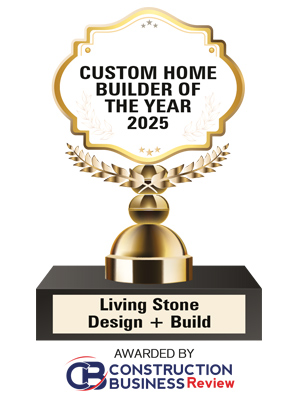Thank you for Subscribing to Construction Business Review Weekly Brief
Living Stone Design + Build: How Living Stone Design + Build Became a Self-Managing Company
 Sean D. Sullivan, President, Living Stone Design + Build
Sean D. Sullivan, President, Living Stone Design + BuildSo, how did they do it?
Laying the Groundwork for Self-Management
The shift started at the top. Founder Sean Sullivan had a clear goal: to create a company that could thrive independently of his constant oversight. His vision was rooted in the idea that empowered employees lead to better results and a healthier, more sustainable business.
This wasn't about stepping away from leadership—it was about redefining it. Instead of a command-and-control model, the company leaned into a people-first, systems-driven approach to leadership and accountability.
A Framework for Clarity and Ownership
Living Stone adopted a leadership and operational model inspired by a combination of Patrick Lencioni’s principles and key ideas from How to Be a Great Boss. This hybrid framework created a strong foundation for organizational health and accountability.
At the core of this system are Management Summary Reports (MSRs) —weekly updates from team members that outline wins, challenges, progress on goals, and any support they need. These reports provide structure, foster communication, and ensure that everyone stays aligned and accountable without requiring constant oversight.
To support the workflow and centralize communication, Living Stone uses software tools like Basecamp. These platforms allow for transparent tracking of duties, responsibilities, and deadlines. Every team member knows what they’re responsible for, and leadership has a clear view of progress across the company. This combination of structured communication and tech-backed accountability has been instrumental in the transition to self-management.
Right People, Right Roles
As Living Stone evolved, the focus turned toward aligning team members with the roles that best fit their strengths. Drawing from Lencioni’s model of cohesive teams and trust-based leadership, the company placed a strong emphasis on honest communication and clarity of expectations.
-
Building a self-managing company isn't about stepping away from leadership—it's about redefining it. Instead of a command-and-control model, I have learned to lean into a people-first, systems-driven approach to leadership and accountability.
Leadership empowered each team member to take full ownership of their area—whether in project management, design, or support operations. Each role came with defined responsibilities, measurable outcomes, and the autonomy to make decisions. This was key to fostering a culture where team members didn’t just complete tasks—they led their areas like mini-entrepreneurs.
Radical Transparency and Trust
Self-management can’t happen without trust. Living Stone fostered a culture of radical transparency, where financials, timelines, and team performance metrics were openly shared. Regular team meetings and ongoing dialogue ensured that everyone had access to the same information and felt comfortable raising concerns or proposing improvements.
This level of openness created a collaborative environment where the entire team is aligned around the same mission and vision, and problems are addressed quickly and constructively.
Built for Continuous Growth
Living Stone sees its structure as an evolving system, not a static process. The company holds Quarterly Conversations to reflect on what's working and what can improve. Team feedback is actively incorporated into operational tweaks, whether that’s updating workflows, adjusting responsibilities, or experimenting with new tools.
This mindset of continuous improvement (kaizen) keeps the team agile and resilient—and deeply invested in the company’s success.
A Business That Runs Without Bottlenecks
Since adopting this self-managing structure, Living Stone has seen stronger team engagement, faster project delivery, and better client outcomes. Perhaps most impressively, the business doesn’t rely on one person to keep everything moving. With systems and trust in place, the team operates effectively and independently—while staying deeply aligned with the company’s mission.
Final Thoughts
Living Stone Design + Build’s journey into self-management is proof that even in a traditional industry, a modern, trust-based, systems-driven approach can work. By combining timeless leadership principles, a clear structure for communication and accountability, and smart use of technology, they’ve built not just a better company—but a blueprint for others to follow.
| Share this Article: Tweet |



